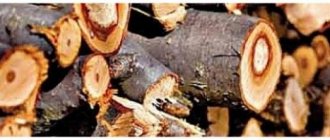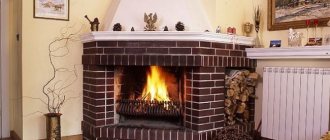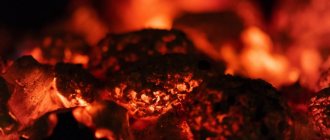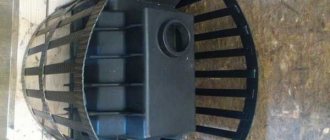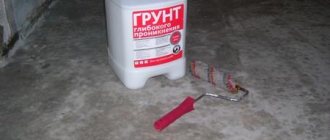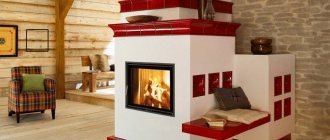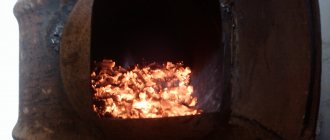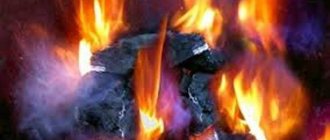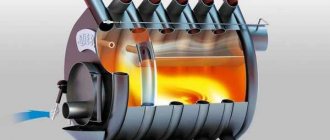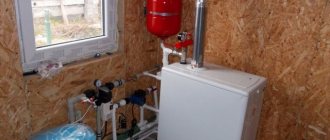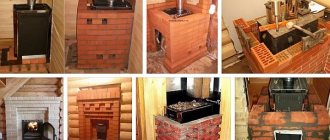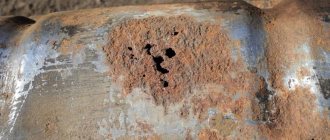General recommendations
Loading and lighting the stove correctly is not just a sign of the homeowner's skill with the fireplace. In case of efficient kindling, the efficiency of the stove will be maximum.
Before lighting wood or charcoal, factors to consider include:
- furnace structure;
- its location;
- what and how much fuel is used for kindling;
- experience in handling the firebox.
How to light a stove with wood:
The first thing you need to do is clean the cast-iron grate (grate), designed for free access of air under the fuel, and also remove all the ash from the ash pan. This is required to ensure that air flows equally evenly to all fuel. If you plan to heat the stove with wood, then they must be dry, of the same size, 8-10 cm in diameter.
Good to know: the combustion temperature of different types of wood in a stove is in Celsius.
The best firewood is birch and oak. With their help you can quickly heat a room. It is necessary to fill the internal cavity of the stove with firewood, taking into account that there should be a distance of at least 20 cm between the top of the firewood and the ceiling of the firebox. It is necessary to lay all the firewood at one time, so as not to constantly open the firebox, adding fuel and thereby cooling the fireplace.
In order for the firewood to ignite, you need to set fire to a splinter, paper or birch bark, placing it all under the fuel. The use of gasoline or similar flammable substances is strictly prohibited, so as not to deform the firebox.
Subtleties and nuances
There are some secrets to successfully making fire from wet wood that we would also like to share:
- The worst thing is if you have damp aspen firewood. This type of wood produces a small amount of heat, so aspen firewood will be very difficult to light. The logs will slowly smolder when exposed to temperature, releasing very little heat.
- A good option for quickly kindling raw logs is birch or spruce. Despite the fact that these tree species emit a lot of soot and soot when burned, they are optimal for quick kindling. The fire catches on the chips and birch bark in literally a matter of seconds.
Wet firewood prepared for splitting
- An original way to quickly dry wood was invented by our ancestors. Salt should be poured in large quantities onto wet firewood. The salt will draw out some of the moisture, and the firewood will become usable.
- If we light a fire in nature and we have flammable liquids in our arsenal, for example, diesel fuel, gasoline, kerosene, then it is quite possible to pour these compounds on the wood chips. If we want to use flammable liquids in the stove, we can moisten a rag with them and place it between the logs. The characteristic odor from such liquids will disappear fairly quickly after lighting a fire.
- Some experts recommend putting an empty bottle of vegetable oil in the firebox. With its help you can quickly get the required amount of fire.
Please note that firewood is always purchased raw. It is best to do this in winter, stocking up for the next season, when equipment easily enters the forest. In this case, you will have the firewood for a whole year before using it. They must be stored in a woodpile, protected from precipitation and blown by the wind.
As you can see, there are no particular difficulties with kindling raw firewood; the main thing is to approach this issue thoughtfully and carry out the preparatory work efficiently. With a little patience, you will have a nice, intense fire that provides warmth.
Fuel types
For kindling, the type of fuel for which the stove is intended is recommended. When choosing or independently building a fireplace, you need to take this factor into account. It is better to make a device that can be melted in different ways.
The most high-calorie type of fuel is anthracite coal. When it burns, 7200 Kcal is released. For comparison, hard coal is up to 7000, brown coal is 4000-4500. Firewood produces the smallest amount of heat, only 3000 Kcal/kg. But they are absolutely environmentally friendly. It is worth considering that well-dried firewood produces more heat - up to 4500 Kcal/kg, raw firewood - half as much.
How to light the stove:
When lighting with coal, you need to take into account that coal powder burns just as long as large pieces of coal. Therefore, you need to add it gradually, 1-2 packets at a time.
As already noted, firewood remains the most environmentally friendly fuel, despite the development of modern technologies for the production of fuel for stoves. The demand for wood-burning hearths continues to this day. Therefore, information on how to properly heat a stove with wood is still relevant .
How to make kindling faster with wet wood?
Thinly chop the raw dies, split them and make a splinter.
We suggest you read: How to clean soot from a stove pipe
Fold the wood chips into a hut, place very small ones at the bottom in the middle, and place larger ones on top.
Keep the furnace vent open to maximum.
For the first 10 minutes, heat the stove with a torch; when it warms up, start adding thin wood. So, melt for another 10-15 minutes, try to maintain the same flame. As soon as a large number of coals appear, start placing small logs, I put two on the edges and one inside.
When the “pioneers” begin to light up, carefully place new ones at a certain distance from one another. Cover the vent and watch the fire's reaction. If it does not go out, the ash can be left covered.
When the stove is melted and produces a strong, even heat that is impossible to raise your hand to, you can lay down the largest logs and close the vent.
You can melt raw logs without additional means if you follow the advice above. But if you use a couple of tricks, the process will be even more fun.
I don’t risk using diesel fuel, kerosene or other highly flammable substances to stimulate kindling. I’ll light the firewood, but what else will I light? There are safe ways that work very well.
Vegetable oil burns well and does not cause fire. I pour it over the logs before burning them, 1-2 tbsp. spoons of oil double the rate of combustion of raw wood.
If you have a lot of salt in the house, sprinkle it well on top of the firebrands before lighting and wait about 10 minutes. Salt provokes the release of moisture from the wood, and the stove will burn faster and stronger.
It is useful to throw an empty container of vegetable oil into the mouth, having previously poured the contents into some kind of container. The oil will cover the inside of the bottle with a thin layer, and the plastic will burn well and for a long time, irrigating the wood.
You can put paper or cardboard in the oil container, so you can maintain the fire even longer.
Prevention
A little bit of dried firewood will speed up the process of kindling “to wet”. If you regularly live in the house, sometimes bring a few logs inside and place them in a dry and warm place so that they dry faster. I have an oil heating device on which I dry finely chopped dies in small batches.
When the potbelly stove has flared up and warmed up, put logs on top of it to put them in the combustion chamber. On red-hot or hot metal, the logs dry quickly and lie comfortably next to each other. Most importantly, do not leave wood on the stove unattended.
We invite you to familiarize yourself with the Basalt slab for a bath around the stove
It doesn't hurt to have a place where you can store useful spare parts. For example, empty sunflower oil containers, toilet paper rolls, paper bags and food packaging. When you immediately need to dissolve the stove in its raw form with firewood, you will kindly remember your own thriftiness. It is also functional waste recycling.
And finally
At first you will need to pore over the stove and spend a lot of time near it. But you will melt the wet logs and be able to dry a new batch for the next ignition.
The main thing you should not forget about when lighting “damp” is: do not let the fire become noticeably weaker, otherwise the stove may not have enough heat and everything will go out. Use my advice, and you will be the first to light the stove, even with very damp wood!
It is better to heat the stove with wet rather than damp wood...
Yes, that's true, but it's a joke. It is better, of course, to heat the stove with dry wood. Let's take a closer look at what dry, wet, wet and damp firewood is...
Wet firewood
Freshly cut firewood is considered damp. The relative humidity of such firewood is 50-100%. In such firewood, not only the intercellular space is filled with moisture. The pores through which moisture is delivered to the foliage - “channels”, “tracheids”, whatever you want to call them) - are also filled with moisture.
Damp firewood will not give the required temperature, if at all it burns and does not smolder. The fact is that for rapid evaporation of moisture in firewood, a significant temperature is needed. If you put a raw log in a hot firebox, it may even increase the intensity of the chemical processes of oxidation - combustion. After all, water begins to burn at high temperatures. But this is a topic for a separate article.
So, damp firewood will not provide the required temperature for ignition - there will be problems with melting it. Even if you melt such an armful, the moisture from the firewood will not go anywhere, but will fill the stove channels and can form an air lock. A combination of factors - low temperature of burning gases (in wet wood) and air humidity in the stove - will cause problems with draft.
Wet firewood
We accept firewood dried outside as conditionally dry, its relative humidity is 20-30%. But such firewood is quite hygroscopic. They can both quickly gain moisture and quickly release it.
Firewood with a relative humidity of 30% or more can be called wet, although it may appear dry. The fact is that moisture in the tracheid canals of wood evaporates faster than intracellular moisture. Therefore, firewood with a moisture content of up to 30% is conditionally dry firewood. This is the moisture content of firewood that is normal for outdoor drying.
Firewood that has been exposed to rain or soaked in anything is wet firewood. But this does not mean that they are raw. Firewood exposed to rain, if it was not damp, is still better than raw firewood, even if it appears dry. Well, something like this…
Now about dry firewood.
How to heat a stove with raw wood
Wet wood burns worse and more slowly, but it can also be lit by following the specified operating procedure.
Lighting a stove with raw wood is somewhat different from the usual procedure:
- Prepare the oven as usual.
- Take small twigs and arrange them in a herringbone pattern. Provide air access - there should be a distance between the rods. If there are no twigs or brushwood, you can make them from bark. Peel the log, turn the bark into strips.
- Light the stove. Close the shutter, the view should be open.
- After some time, the rods will flare up and you can add damp firewood, leaving a distance between them. To speed up burning, you can add paper. Thin wood chips create heat, which helps moisture in the wood evaporate faster.
- It takes about 15 minutes for the carbon monoxide to dissipate. After this, you can open the damper and door.
- Place firewood in small portions for better burning.
It is highly undesirable to use kerosene, gasoline or other flammable liquids. They will only contribute to excess smoke from damp wood. Wet firewood will burn more slowly and to properly warm up the stove you will need 2-3 times more wood than regular firewood.
You need to monitor the draft level by the color of the flame. The flame is bright white and there is a hum in the oven? We urgently need to reduce cravings.
If the smoke is black and the flame is red, the draft, on the contrary, needs to be increased.
The normal color of the flame is golden yellow, the combustion is even, without crackling or smoke.
Stages of the combustion process
The heat entering the room appears as a result of the combustion of wood. It is important to organize the combustion process in such a way as to achieve maximum efficiency and safety at each stage. Combustion does not occur instantly. This is a fairly long period that can be divided into two stages.
Ignition
The wood is placed in the combustion chamber and set on fire. First, the wood is heated or pyrolyzed, during which flammable or pyrolysis gas is released. Gradually it ignites, heating the fuel material even more.
Combustion
The temperature of firewood heated by burning pyrolysis gases increases to the combustion level. The entire bookmark ignites and burns evenly.
You need to know that without a sufficient supply of oxygen, pyrolysis gases burn out very quickly and exit through the chimney. In order for the combustion to be long and uniform, it is necessary to maintain an optimal temperature in the firebox, ensure the supply of oxygen, and ensure that the pyrolysis gas burns out completely.
Combustion process
The first ignition took place. Now you need to start the second batch of already prepared firewood. When the hearth is heated, you can burn with whole logs. However, there is no need to lay too large logs, as the fire may not be able to cope with them.
In addition, they form long-smoldering coals, which is inefficient in terms of fuel use. Most of the heat will be carried away into the chimney by air, which significantly reduces efficiency. You need to carefully remove too large firewood, postponing its use for a while. It is also important to turn over those logs that burn weakly in time and try to maintain an even distribution of fire inside the firebox.
The longer the combustion process lasts, the more you need to ensure that the flame inside the firebox burns evenly. You need to get maximum heat from the coals to heat the house. This can be achieved by turning the coals. It also promotes a greater flow of oxygen. The chimney channel must be closed when the burning flame turns from blue to white.
There are specifics for lighting stoves depending on the material from which they are made. Fireplaces made of stone, concrete and brick require a lot of effort when lighting them. It takes at least an hour to ignite. The fireplace takes the most time. When lighting a fireplace with an open flame, you should always be nearby for safety reasons.
How to light a stove with coal:
How to light the top logs
- After the firewood has already been placed in the firebox, you need to remove one log.
- Then, in the resulting area, create a hill of dry wood chips.
- Next, just set it on fire.
- Then, the fire ignites the top logs, and then the rest of the firewood in the firebox.
How to quickly light a stove if the wood is not completely dry
Of course, it is best to prepare firewood for the winter starting in the summer so that it has time to dry out. to significantly reduce the time spent chopping wood . So, the combustion process will not be problematic. But if it already happens that the firewood was prepared late and did not dry out completely, you need to have a stock of dried wood chips. There is one trick that will help you light wet wood . The bottom line is that ignition should not start from the bottom of the firebox, but, on the contrary. It won’t take much effort to light the top logs, and they will already warm up and ignite the rest of the logs. Now that it is already clear how to quickly light a stove with raw wood , you need to decide on the issue of maintaining the fire.
How to speed up kindling on wet wood?
You can melt raw logs without additional funds if you follow the recommendations above. But if you use a couple of tricks, the process will be even more fun.
I don’t risk using diesel fuel, kerosene or other highly flammable substances to stimulate kindling. I’ll light the firewood, but what else will I light? There are safe methods that work great.
Vegetable oil burns well and does not cause fire. I pour it over my logs before lighting them, 1-2 tablespoons of oil doubles the rate at which wet wood ignites.
If you have coarse salt in the house, sprinkle it well on top of the logs before lighting and wait about 10 minutes. Salt provokes the release of moisture from the wood, and the stove will flare up faster and hotter.
It is useful to throw an empty container of vegetable oil into the mouth, after pouring the contents into some kind of container. The oil coats the inside of the bottle with a thin layer, and the plastic will burn well and for a long time, irrigating the wood.
You can put paper or cardboard in the oil container, so you can maintain the fire even longer.
Prevention
A little dried firewood will speed up the “damp” kindling process. If you live in the house all the time, periodically bring a few logs inside and place them in a dry and warm place so that they dry faster. I have an oil heater on which I dry finely chopped dies in small batches.
When the potbelly stove has flared up and warmed up, place logs on top of it to put them in the firebox. On red-hot or hot metal, the logs dry quickly and lie conveniently at hand. Most importantly, do not leave wood on the stove unattended.
It doesn't hurt to have a place where you can store useful spare parts. For example, empty sunflower oil containers, toilet paper rolls, paper bags and food packaging. When you urgently need to light the stove with raw wood, you will kindly remember your thriftiness. In addition, it is a practical waste recycling.
Principles and rules of kindling
The rules for lighting a stove have been passed down from generation to generation. Over the centuries, the technology has been refined, and today it has reached perfection. Many stove operating procedures form the basis for servicing modern heating equipment, such as pellet boilers
Preparatory work
Before lighting the stove for the first time after completion of construction work, you will need to wait until the solution has completely dried. The first stage is an external inspection, paying attention to the following points:
- Corresponding thickness of seams;
- correct execution of brick ligation;
- compliance with vertical angles;
- ensuring the accuracy of tile installation.
In this case, deviations are allowed: for masonry without cladding - up to 5.0 mm, and up to 2.0 mm when facing with tiles, vertical - no more than 2.0 mm per 1.0 m height.
Next, check the density of the masonry. Typically, a material with a high emission of black smoke is used for this. A trial fire is carried out for several days in a row with a normal load of firewood. When the furnace is operating, not only the uniformity of heating along the outer walls is determined, but also the uniformity of cooling. Next, the structure is checked for cracks and, if found, they are promptly repaired.
Stacking firewood
Before laying firewood, clean the ash chamber to allow the blast air to flow without resistance through the ash pan to the flame. The stove is lit only with dry wood.
After cleaning the stove from any remaining ash, they begin to place logs in the firebox. This is done in two ways: • a hut with a cone for a large combustion space; • in parallel, maintaining clearances of 8 to 10 cm.
Firewood is placed in the center of the firebox or closer to the door until approximately 2/3 of the firebox is filled. The top of the combustion space must remain free at least 18–25 cm. Firewood should not be stacked against the back wall.
Methods of igniting a flame
Next, push the view to the desired level and push the blower door a little. The paper is lit with matches in front of a pile of firewood. After igniting the wood, close the combustion door. When burning evenly, cover the view. The combustion process is adjusted by opening/closing the viewer and the blower.
The firebox door must always be closed. Open it only if you need to stir the coals with a poker or add firewood.
Combustion control:
- White flames and noise in the smoke ducts indicate a high draft; it is reduced by using the blower door.
- A red flame with dark smoke from the chimney indicates low draft and you need to open the vent slightly.
- The yellow color of the flame characterizes the normal process of fuel combustion.
Nuances of choosing fuel
A home stove is actually a universal heating device, since it can operate on different types of fuel: wood, coal, peat. In modern conditions, fuel manufacturers offer new types, so-called Euro-firewood, and various options for pressed briquettes.
The traditional fuel for the stove is birch, which has a high lower calorific value. Its logs burn out completely, do not shoot or spark. The only drawback of birch is that if it is placed in a firebox higher than normal, a strong fire can lead to a fire.
In terms of calorific value, the best fuel is oak, which burns for a long time and produces a lot of heat. Its net calorific value is almost 20% higher than that of birch. But since the price of oak is also much higher, before choosing, you need to make a simple calculation of what will be more profitable for heating in a given climatic region.
Oak firewood
Pine and spruce firewood have a heat transfer even lower than that of birch and oak. For the heating season, they are purchased 20-30% more. The presence of resin in the logs not only causes a strong crackling sound, they also shoot and can throw pieces of ash onto the floor; if it is wooden, a fire may occur. Therefore, when using this type of firewood, it is recommended to place a metal sheet in front of the stove.
Aspen and alder firewood are highly valued because in addition to providing heat, they clean the chimney of soot, which is why they are rightfully considered “royal” firewood.
Euro firewood performed well when firing a Russian stove, with a complete combustion process and low ash yield. Their price remains high, equal to the cost of coal, but their calorific value is approximately the same.
Reloading
Long-burning solid fuel devices are designed in such a way that one fill lasts for a long time. With regular wood-burning stoves, one serving doesn't last long. At best, not 6-8 hours. Therefore, to maintain the operating mode, it is necessary to re-bookmark. It is performed when the wood is almost burnt out, but a bluish light flame remains.
In the process of laying a new portion, two important conditions are met. First, carbon monoxide must not be allowed to enter the room. Secondly, you need to keep the temperature high, which will make re-kindling much easier. Therefore, they do everything as quickly as possible. They begin by carefully raking the smoldering remains of firewood and coals into the center of the chamber. So that they are in the middle of the new bookmark. Then everything is done the same way as the first time.
How to heat “problem” stoves
These, for example, include heating devices that have not been used for a long time. In addition, in winter it is more difficult to flood any stove appliance. First, let's figure out how to heat a bathhouse or house with wood after a long break.
Step-by-step instruction
- We inspect the equipment to make sure it is in good working order.
- We warm up the chimney. To do this, set the maximum thrust, open the views and the blower door. Roll a tube out of cardboard or paper. We introduce it into the cleaning window and set it on fire. We warm up the pipe until a characteristic hum appears.
- We close the cleaning window and put flammable material into the chamber: sawdust, paper scraps. We set fire until they burn out, and once again check the quality of the chimney exhaust.
After this, you can light the stove. In cold weather, burning the warming material is added to the actions described above. To do this, approximately half of the usual amount of fuel is put into the chamber. It is burned at maximum draft until coals are formed. After this, full loading is carried out with kindling and entry into operating mode.
Ignition of the furnace
For combustion to occur, oxygen must be provided to the firebox. Its regulation is ensured through the blower and the view, which must be open at the beginning of the kindling. When the wood is hot enough, the ash pit is left ajar. The view is completely closed when the blue flame disappears: this indicates that there is no carbon monoxide hazardous to health.
In classic stoves, three components of ignition are important: the space of the firebox itself, the ash pan and the chimney. It is necessary to clean the ash pan and the firebox so that nothing interferes with the free access of air to the fuel.
Before lighting the stove, the firewood must be prepared in advance, calculating the volume needed for the entire burning period. The most important thing is the quality of the firewood. The primary load should be 3⁄4 of the possible load weight. The further combustion process depends on how correctly the first load is calculated.
You will also need flammable materials: birch bark, splinters, paper. To prevent the combustion process from being interrupted, you should put logs along with thin splinters during the first kindling.
The operation of the chimney and blower is invisible. However, these devices should not be ignored, as they contribute to the final efficiency of the entire system. The required amount of air must be supplied to the oven. It is also necessary to completely remove flue gases, including carbon dioxide and carbon monoxide.
You can determine how efficiently the system works by the brightness of the flame. If it is white, the channel is open too wide, and in this case the valve must be closed. A bright yellow flame indicates that everything is normal, access to a sufficient amount of oxygen is ensured.
Which firewood is better?
Heating a stove to heat a home or bathhouse with wood is the most economically efficient way. However, different types of wood produce different efficiency indicators. The duration of burning of logs depends on the density of the tree, therefore, the denser its structure, the longer the logs will burn and the more thermal energy they will release into the room. This is important to consider when choosing firewood.
Which tree species is the hottest?
Of course, oak is an ideal fuel in terms of efficiency, but this type of wood is very expensive and heating a stove with oak wood is an unforgivable luxury. That's why
In the middle zone and northern regions of the Russian Federation, it is most acceptable to use birch. Wood of this type optimally combines price and quality. In the southern regions, it is better to use white acacia to fire stoves.
At the same time, in order to heat buildings as efficiently as possible, you need to carefully prepare for the heating process.
Simple solutions
The algorithm of actions depends on the following factors:
- type of wood;
- the presence of a special means for ignition;
- stove location.
Damp aspen does not burn, but “melts,” and does not emit sufficient heat to dry the wood chips. Softwood firewood ignites more easily because it contains resins and essential oils. Birch burns best in its raw form, although it also requires time to ignite.
One of the options for solving the problem is to buy some dry firewood in addition to wet firewood, and mix the heat in the stove. You can light a fire using wood chips cut from dry logs.
How to heat with raw wood? You need to do the following:
- pinch a splinter from the middle part of the raw firewood and fold it in the form of a hut, with the larger one on top and the smaller one inside;
- If you have birch firewood, remove the birch bark from it and use it to light a flame.
In this case, thin wood chips or birch bark dry out a little, and when ignited they create heat, under the influence of which the moisture from the firewood gradually evaporates and they ignite without even drying completely.
Preparation and storage of firewood
When preparing firewood, use trees growing in dry places; they contain less moisture, therefore, they will burn with greater heat transfer. If there are no dry stands, then the fallen logs must be thoroughly dried. The best period of time for harvesting wood for fuel is November-December.
You should not leave cut trees for a long time; if possible, cut them into several parts. The logs that are intended for heating the stove should be of medium size - 8-10 cm in diameter, the length depends on the dimensions of the combustion chamber.
After cutting the logs, it is better to split them and stack them in a special well-ventilated room, without excess moisture, protected from rain or snow. Therefore, you cannot store firewood in the cellar; it is better to store it in a shed or under a shed with good ventilation.
One of the effective ways of laying logs is in criss-cross cells:
The editors of the site santehnikportal.ru recommend drying firewood before using it for 2-3 years. During this period, most of the moisture will evaporate from them, leaving only about 10-15%. Well-dried and split logs are easy to ignite; they burn with great heat transfer, without forming condensation on the constituent units of the stove structure and chimney.
Step-by-step instruction
Sooner or later, each of us faces the problem of wet firewood, and the situations can be very different. For example, when you need to light a fire in nature to keep warm, cook fish soup, shish kebab, baked potatoes, or when you need to heat the house, prepare a bathhouse to steam and wash. It is much more difficult to light wet firewood, but with the right approach this task can be easily accomplished. Let's consider at the same time how to heat a stove with raw wood and how to light a fire with it in nature.
To implement a simple plan for lighting firewood, we will need:
- a good ax, a sharp knife;
- wet firewood;
- fine salt;
- a stack of ordinary newspapers;
- lighter or matches.
First of all, we need to chop some of the firewood into small pieces, chips. Small pieces of wood will quickly dry out and catch fire, while large logs, on the contrary, will negatively affect our fire. A good ax and a sharp knife will allow you to do the work quickly.
Winter version of a small fire
Note that the firewood inside may well be dry, so we make chips and splinters from the middle part of the logs. If we are dealing with birch firewood, then we remove the birch bark from the blanks. On logs, birch bark will not immediately dry out and catch fire, but separately, on the contrary, it will easily ignite and give the necessary fire.
We assemble a small hut from the resulting wood chips, put small splinters in the base, and cover them with larger wood chips. It is important that there is room for air inside, as well as that air masses circulate freely inside and outside our structure.
We build the hut on a pedestal of newspapers, additionally covering the chips on all sides with newspapers. When placing newspapers inside, you should crumple them and give them some volume. If there is birch bark, also lay it deep in the hut. Sprinkle fine salt on top of the structure. Being a good adsorbent, salt will draw out some of the moisture from the wood chips.
Carrying out preparatory activities before lighting the fire
Note that in a brick-lined stove it is very easy to assemble such a structure and light it. At least it’s more convenient and better to light such a stove than to work with a shapeless gray hole. For many stove owners, the memories of the difficulties they overcame during the construction stage, when they erected the stove, covered it with bricks, and covered it, are still fresh. All the efforts of that time were not in vain; now you can quickly and easily light a fire in the firebox, even from damp wood.
Good to know: Fuel briquettes made from sunflower seeds and husks, general overview
The preparatory measures have been completed, it’s time to set fire to our original structure. At the same time, try to pay attention to whether the wet wood-burning hut made of wood chips will catch fire from the newspapers. If you fail to light the fire the first time, you should repeat the procedure. In this case, the dried wood chips will flare up better. If the fire catches on, it’s time to put in a couple of larger logs. This should be done so as not to block the access of air to the fire.
If we are dealing with a stove, then after receiving fire, we should open the hood and close the doors to the room itself. When lighting a fire in nature, you can blow it a little, using any suitable object as a fan. For the first half hour, you should maintain the fire using only thin chips and logs.
When the fire becomes more confident, you can add more wood. Try not to push too much, clutter the flame, or block the air (oxygen) access to the fire. Large logs can only be laid when you already have a sufficient amount of good coals. If you had to heat the stove with raw wood, then monitor the intensity of the fire, do not let it weaken too much, because if there is not enough heat for new raw logs, then everything may simply go out. Starting a fire requires patience, especially when you are dealing with raw fuel.
Decorative elements accompanying the stove
In order not to think about whether it is possible to heat the stove with raw wood, do the preparatory work, bring some firewood home and dry it near the stove for the future. Dry firewood stacked near the stove and ready for use will allow you not to think about such problems in the future. In addition, a stack of firewood can make a very original decorative item for the home.
Good to know: What kind of firewood is best to use to light a fireplace?
How to light the stove after a long break?
In early spring, when you arrive at your dacha, you will have to light the stove to warm up. But after a long period of inactivity, it is worth lighting a fire in it so as not to damage either the heating structure itself or the residential building.
First of all, check the stove outside and inside for the presence of:
- chips;
- cracks;
- foreign objects;
- small animals and birds;
- soot deposits.
The presence of these inclusions can become a serious obstacle to the normal operation of the device.
Fill cracks and chips with mortar and get rid of foreign objects. To clear the chimney duct of soot accumulation, use a special metal ball on a long rope. The ball can be equipped with a wire brush, then lower it down the chimney and lift it up, repeating these manipulations several times, shaking off the soot after each rise.
Be sure to check for draft if the stove has not been fired for a long time. Light the wood by fully opening all the doors, then close them, adjusting the degree of exhaust. Lay two logs parallel to each other at a short distance, then place the other two on top of them, placing them perpendicular to the first row. Place paper inside and set it on fire.
After a long period of inactivity, do not heat the oven at full power at once. The first combustion should not exceed half an hour; after 4 hours, the kindling can be repeated, increasing the combustion time.
Features of the furnace fire in the black sauna
Lighting a stove the black way is sometimes practiced today when heating a bathhouse, since this method produces more efficiency than the “white” method, and less fuel is consumed.
Combustion products in such devices do not exit through the chimney, but through the windows and door. A large amount of soot settles on the walls, acting as an adsorbent.
The procedure for firing a black stove in a bathhouse:
- Open the windows and door to bring in fresh air and support the combustion process.
- Fold the firewood into a “house” by placing paper under it and set it on fire.
- Before adding wood for the second time, generously spray the walls and shelves with water.
- Gradually add firewood, finishing the fire when crimson light appears above the stones.
- Wait until the last portion of wood burns out and remove the coals.
- Ventilate the room by opening the windows and door.
- Rinse doors and shelves with cold water.
- Splash a tub of water on the heater and close the doors.
Now you can enjoy all the delights of a steam room, melted in black!
How to properly heat a stove with coal?
The peculiarity of coal as a heating fuel is that it begins to gasify at a temperature much higher than that of wood, and when heated to less than 800-900 degrees, the combustion process is sluggish. But, if coal is quickly heated to 900-1000 degrees, it will produce a high temperature. In this case, the coal exerts a large thermal stress on the stove.
Since the heat capacity of the furnace is limited and the thermal voltage is greater, coal is loaded less frequently, and the number of fireboxes can be increased up to 4 times a day. But not every design is suitable for using this type of fuel.
The Russian stove is not at all suitable for burning coal. Great care should be taken when using this fuel to heat Swedish, Dutch and other duct structures by three or more turns. At the same time, the oven in a Swedish stove when fired with coal will not work efficiently.
It is not so important how to heat the stove with coal, but what type of fuel is best to use:
- Young geological fossil lignite coal, which retains its woody structure, is not suitable for firing furnaces: it immediately turns into dust, completely clogging the grate.
- Anthracite generates a lot of heat, rapidly but briefly gasifies and is difficult to ignite. It can be used to heat cast iron and heat-resistant steel devices, sometimes bell-type structures and ducts by no more than 2 turns with a fireclay firebox.
- Brown coal can be used to heat any stove except a Russian one, but it is a very unenvironmentally friendly fuel. In addition, brown fuel cannot be stored in large quantities (more than 10-15 kg): it spontaneously ignites.
- Ordinary coal is suitable for firing cast iron stoves and brick stoves with fireclay fireboxes. Coal from individual deposits can be used to heat brick kilns without fireclay and with fireclay, but in a layer of 12-18 cm.
Attention! To light a stove using a corner, it is better to use a special lighter that produces a strong flame that immediately warms up the load to 1000-1100 degrees.
Fuel cakes can be made from coal dust mixed with water, but they are a strong allergen and carcinogen and can spontaneously combust.
What kind of firewood is preferable?
It is best to take firewood from hard, deciduous trees. When they burn, no resin is released, and the high combustion temperature is maintained without problems. An additional advantage is that soot remains to a minimum inside the chimney.
It is not advisable to heat the stove with garbage; it is also bad to use spruce and pine wood. On the contrary, it is good to heat with sawdust. Briquettes are also used; they are made from peat or wood. The fuel should have a moisture content of about 20 percent. It is present if the firewood is stored in a dry room for a year.
Scientists from the UK predicted a digital apocalypse
Plushenko said that he encourages his students with money
“Sell clothes that haven’t been worn for more than 18 months”: how to improve your finances
Types of coal and their characteristics
Coal is a natural fuel. It consists of flammable carbons and various impurities that do not burn. The quality and classification of raw materials depends on the ratio of such substances. The age of the fossil also affects the grade of fuel.
Several types of coal are used to light stoves - brown, anthracite, lingite or stone. Each fuel group has its own characteristics and features of use for stoves.
Brown coal
Due to its low carbon content, large amount of water and volatile compounds, brown coal has a low heat of combustion. Therefore, it is classified as a low category fuel. The color of this still “young” geological deposit is brown.
Brown coal consists of 30-40 percent moisture. A significant proportion is occupied by volatile substances, and the carbons necessary for combustion can range from 50 to 70 percent. When stored outdoors, the density of raw materials is significantly reduced. This occurs as a result of water evaporation. Prolonged exposure to the open air leads to the transformation of the fossil into powder.
What does brown coal look like?
Brown coal is used quite rarely for heating stoves. It is mainly used in subsidiary farms. The use of such raw materials for the firebox leads to excessive clogging of the chimney pipe with soot. When burning, a pungent odor and smoke are released, and after burning, quite a lot of ash is formed.
Lingit
This fuel is classified as a type of brown coal. Lingite is considered the “youngest” fossil. In some countries it is not classified as coal due to its too loose structure. It contains up to 45 percent water and the same amount of sulfur. This fuel has a brown tint. Often the name “black lingite” refers to subbituminous coal.
The use of such fuel is completely limited, since its combustion characteristics are somewhat lower than those of brown coal.
Coal
This type of raw material is best suited for furnace devices. Its deposits are located deeper and are formed under high temperature and pressure. The nitrogen content in such raw materials depends on its type and can reach 95 percent. Thanks to this, coal has good physical and chemical properties and is a fairly valuable fuel.
The raw material contains a low level of moisture - up to 32 percent and a lot of flammable substances. The specific heat of its combustion is 5.5 kcal/kg. The color of coal can be black or dark gray.
Anthracite
Anthracite is found deepest in the ground. In color it resembles coal, but only with a more pronounced metallic sheen. The main qualities of such fuel are high density up to 1700 kg/m3 and a significant thermal combustion rate of 9 kcal/kg.
There are quite a lot of volatile substances in anthracite, so it does not ignite easily, but due to the large amount of carbon, up to 97 percent burns well. The special value of such fuel is its smokeless combustion.
The advantage of anthracite is smokeless combustion
The type of fuel affects not only the productivity of the heating process, but also the operating time of the stove. The average service life of heating devices powered by coal is seven years. If used correctly, the operating period may increase slightly. The manufacturer of furnace equipment always indicates what type of raw material the furnace is intended for.
What type of wood is best for firewood?
Different types of wood differ from each other in their calorific value and combustion characteristics. In this regard, when choosing fuel, you need to understand the performance characteristics of firewood.
- Pine has a high combustion temperature. The reason for this is the high resin content. This rock suggests many voids where tar deposits are present. When burning, they produce micro-explosions, sparks and ignited pieces of wood fly away.
- Spruce is less efficient in a firebox than pine. It contains less resins. Splitting wood is easy, but when burning the tree smolders and smokes. These conifers can be used for heating only in extreme cases.
- Alder. The main feature is the ability to burn without forming soot. At the same time, during combustion, deposits in the chimney will also be burned out. Such characteristics are unique to aspen.
- Poplar. It burns out quickly without providing enough heat. It should not be used to heat a bathhouse, but it is quite suitable for a home.
- Birch. Burns hotter than beech with acacia and oak. But there is also a drawback, and a significant one. It is necessary that there is sufficient air flow into the combustion chamber. Otherwise, there will be no heat, but only tar and smoke on the walls of the chimney.
- Oak. It is distinguished by its high density and ability to release heat. Its characteristics are similar to ash and also resemble beech. Oak wood is quite heavy when splitting.
- Maple. Its wood burns quickly without forming coals, as a result, there is a need to constantly add fuel. It's like burning linden wood.
- Apple trees. Like other fruit species, it pricks well and produces enough heat when burning. Apple firewood is also preferred because of the pleasant smell in the room.
Here's what else the stove maker said.
The most popular country among Russian air travelers has been named
Think Different: How to Change Your World to Accept a Changing Reality
The Journey of a Lifetime: It's Easy to Track Your Finances Every Day
Causes of smoke
Sometimes, even when the stove is properly lit, smoke may form. The reason may be poor quality coal. But most often the following factors influence smoke:
- the appearance of cracks in brickwork;
- presence of blockages in the chimney and stove channels;
- destruction of the internal part of the heating device.
The appearance of smoke may be due to blockages in the chimney and stove channels.
When igniting in a very cool firebox, smoke may also be released in the entire stove system. Soot often forms when two stoves are directly connected to one chimney. To avoid smoke, a smoke damper is installed.
How to light the stove after a long period of inactivity
After laying, the stove is dried naturally for 2-3 days.
Next, the process of forced drying begins, which involves heating the firebox for 1 hour not at full power. Test ignition is carried out using a small amount of dry firewood from thinly chopped logs, wood chips and shavings. The oven is heated 2 times a day, the forced drying process lasts 3-6 days, depending on the size of the structure and the complexity of the brickwork. A trial firebox after construction allows you to check the quality of the stove maker’s work and identify possible design flaws. If the forced drying work is done correctly, this will give strength to the clay composition, but the elasticity of the masonry will be preserved.
During prolonged downtime, draft is most often disrupted, which is due to the presence of a barrier in the chimney in the form of a mass of cold air. It is possible that the pipe may become clogged with fallen leaves or other small debris. For this reason, the draft must be checked, then a test ignition is carried out to identify violations in the system.
When deciding how to light a Russian stove after a long period of inactivity, it is worth considering that a sharp increase in temperature in the firebox is fraught with the appearance of cracks in the brickwork. They heat slowly, allowing the walls to heat up gradually. When the brick becomes warm, you can switch to normal mode and add firewood at the desired frequency.
To light the stove, you can use dry alcohol in tablets or coarse table salt. Two or three handfuls of it are enough to ignite the wood.
In order not to come into contact with a similar difficulty the next day, it is necessary to chop several firebrands as small as possible, and after heating the stove, dry them on a shield.
A few armfuls, enough for one or two days, can be stored in the room. By regularly replenishing your fuel supply, you can free yourself from the problem of wet firewood for a certain period of time. Proper stacking of the woodpile should not be neglected. In severe frosts, this can help the wood get rid of moisture faster.
However, it is not advisable to use such fuel regularly. When raw wood burns, steam is generated, which passes through the stove channels and settles on them. Drops of moisture mix with soot and gradually help destroy the chimney. Using dry wood as fuel for the stove can help avoid this.
Tips for lighting a sauna stove
And a little about how to heat a wood-burning sauna. In general, the process is no different from that described above, but there are some features. Before ignition, in addition to the mandatory serviceability check of the equipment, the presence of water in the boiler is checked. It is strictly forbidden to light the stove without it. The valve is opened before lighting.
After the flame has flared up, close the ash door and move the valve onto the boiler. At the same time, the exit to the chimney is closed. When the water in the container has boiled, the logs have burned and become red coals, the stones have become hot, the temperature in the steam room has risen, you can begin the bath procedures. Preliminarily open the valves and close the doors of the firebox and blower.
Learning to use wood heating appliances is not that difficult. It is important to always remember their potential dangers. Never use flammable liquids for ignition. This leads to a fire. The floor near the firebox is always finished with non-combustible materials, and the fuel is stored so that there is no risk of ignition. The chimney valve closes completely only after all the carbon monoxide has escaped. This is determined by the color of the flame. The blue shades are leaving them.
The most common types of firewood
A good affordable option for firewood for central Russia is birch. Despite the average heat transfer, birch is very popular. Birch burns well undried, that is, with little moisture. In addition, it pricks well. And the price of birch firewood will definitely not hurt your pocket.
Do you want a gift?
80% of buyers select the wrong equipment. Leave a request for a FREE selection of a fireplace, stove, chimney taking into account all your parameters/needs. You will receive advice from a specialist who has been working in the furnace business for 15 years. AND 200 RUBLES AS A FREE!
Conifers give excellent heat. Pine and spruce are easy to chop and can be used to light the stove. As for the disadvantages, tarred coniferous wood emits a lot of smoke when burned. For this reason, soot accumulates in the chimney and must be cleaned regularly. Aspen and alder are good choices for clearing soot from a chimney. They emit almost no soot. “Black” baths, in which smoke from the firebox enters directly into the room, are heated with alder wood.
And a little about what kind of wood you shouldn’t use to heat your stove. Poplar has poor calorific value, burns out instantly, and besides, it sparks strongly. The same can be said about willow: a lot of smoke and soot, little heat.
Safety regulations
The main hazards when using furnaces are carbon monoxide and fire. For safety reasons, follow a few rules:
- inspect the stove before lighting for traces of soot;
- do not use flammable liquids for ignition;
- finish heating 2 hours before bedtime;
- Use fuel that is suitable for this type of stove.
In conclusion, we note that brick stoves are heated to the maximum, and metal stoves - in small portions to avoid warping of the body.
How to heat correctly?
To reduce wood consumption and improve combustion, the stove maker advised doing the following:
- You need to put logs into the stove that are approximately 5 cm shorter in size than the length of the firebox. If, when preparing firewood, you make it approximately the same size, it will be much easier to burn.
- The logs are laid in such a way that there are gaps for air.
- Although the stove can, in principle, be heated with raw wood, this is fraught with the release of tar with smoke and in considerable quantities. In this regard, it is better to deal with dry fuel (no more than 25 percent humidity).
And finally - about how to start lighting the stove.
The most expensive shepherd in the world: a border collie dog sold for $38 thousand.
Working from home: how not to harm your own energy (start with your daily routine)
Brand for 8 thousand rubles: a Siberian woman created a profitable business in the sewing business
